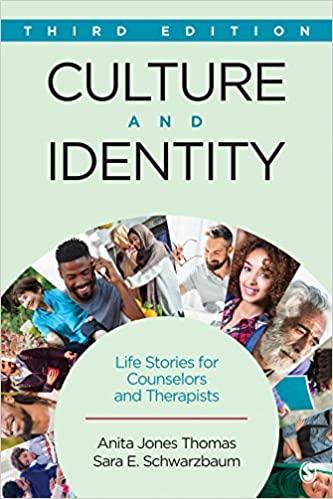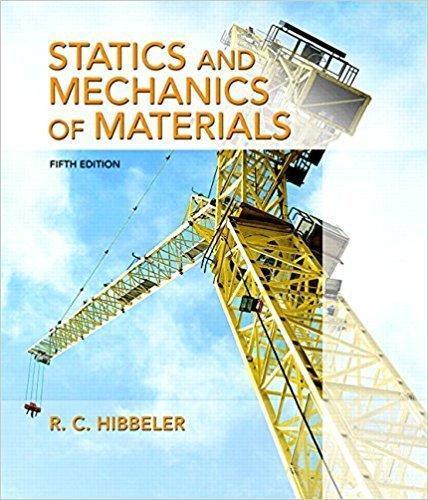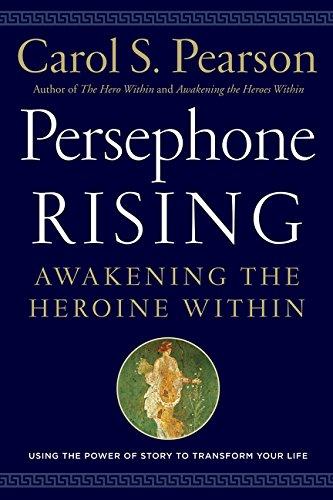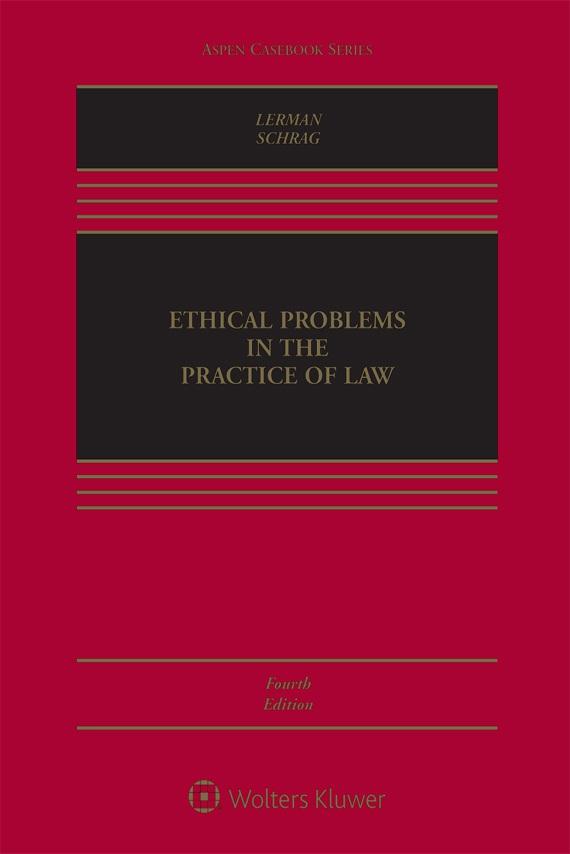EthicalProblemsinthePracticeofLaw(Aspen CasebookSeries)4thEdition,(EbookPDF)

https://ebookmass.com/product/ethical-problems-in-thepractice-of-law-aspen-casebook-series-4th-edition-ebook-pdf/

Instant digital products (PDF, ePub, MOBI) ready for you
Download now and discover formats that fit your needs...
Business Organizations: Cases, Problems, and Case Studies (Aspen Casebook Series) 4th Edition, (Ebook PDF)
https://ebookmass.com/product/business-organizations-cases-problemsand-case-studies-aspen-casebook-series-4th-edition-ebook-pdf/
ebookmass.com
Criminal Law: Case Studies and Controversies (Aspen Casebook Series) 4th Edition, (Ebook PDF)
https://ebookmass.com/product/criminal-law-case-studies-andcontroversies-aspen-casebook-series-4th-edition-ebook-pdf/
ebookmass.com
Trapped: Brides of the Kindred Book 29 Faith Anderson


https://ebookmass.com/product/trapped-brides-of-the-kindredbook-29-faith-anderson/
ebookmass.com
Global Algorithmic Capital Markets: High Frequency Trading, Dark Pools, and Regulatory Challenges Walter Mattli
https://ebookmass.com/product/global-algorithmic-capital-markets-highfrequency-trading-dark-pools-and-regulatory-challenges-walter-mattli/
ebookmass.com


On Life: Cells, Genes, and the Evolution of Complexity
Franklin M. Harold
https://ebookmass.com/product/on-life-cells-genes-and-the-evolutionof-complexity-franklin-m-harold/
ebookmass.com
Culture and Identity: Life Stories for Counselors and Therapists
https://ebookmass.com/product/culture-and-identity-life-stories-forcounselors-and-therapists/
ebookmass.com
Relentless Solution Focus Jason Selk [Jason Selk]


https://ebookmass.com/product/relentless-solution-focus-jason-selkjason-selk-2/
ebookmass.com
The Palgrave Handbook of Criminology and the Global South 1st Edition Kerry Carrington
https://ebookmass.com/product/the-palgrave-handbook-of-criminologyand-the-global-south-1st-edition-kerry-carrington/
ebookmass.com
Statics and Mechanics of Materials (5th Edition ) 5th Edition
https://ebookmass.com/product/statics-and-mechanics-of-materials-5thedition-5th-edition/
ebookmass.com



Persephone Rising: Awakening the Heroine Within Carol S.
Pearson
https://ebookmass.com/product/persephone-rising-awakening-the-heroinewithin-carol-s-pearson/
ebookmass.com


Summary of Contents
Contents
Table of Problems
Preface to the Fourth Edition for Teachers and Students
Acknowledgments
A Note to Students About Updates to This Book
Introduction
A. Ethics, morals, and professionalism
B. Some central themes in this book
C. The structure of this book
D The rules quoted in this book: A note on sources
E. Stylistic decisions
Chapter 1: The Regulation of Lawyers
A. Institutions that regulate lawyers
B. State ethics codes
C. Admission to practice
Chapter 2: Lawyer Liability
A. Professional discipline
B. Civil liability of lawyers
C Criminal liability of lawyers
D. Client protection funds
E Summing up: The law governing lawyers
Chapter 3: The Duty to Protect Client Confidences
A The basic principle of confidentiality
B. Exceptions to the duty to protect confidences
C. Use or disclosure of confidential information for personal gain or to benefit another client
D. Talking to clients about confidentiality
Chapter 4: The Attorney-Client Privilege and the Work Product Doctrine
A. Confidentiality and attorney-client privilege compared
B The elements of attorney-client privilege
C. Client identity
D. Waiver
E The crime-fraud exception
F. Revelations permitted or required by the ethics codes
G. The death of the client
H. The work product doctrine
I. The attorney-client privilege for corporations
J The attorney-client privilege for government officials
Chapter 5: Relationships Between Lawyers and Clients
A Formation of the lawyer-client relationship
B. Lawyers’ responsibilities as agents
C Lawyers’ duties of competence, honesty, communication, and diligence
D. Who calls the shots?
E. Terminating a lawyer-client relationship
Chapter 6: Conflicts of Interest: Current Clients
A. An introduction to conflicts of interest
B General principles in evaluating concurrent conflicts
C. Conflicts between current clients in litigation
D Conflicts involving prospective clients
Chapter 7: Current Client Conflicts in Particular Practice Settings
A Representing both parties to a transaction
B. Representing organizations
C. Representing co-defendants in criminal cases
D. Representing co-defendants in civil cases
E. Representing family members
F Representing insurance companies and insured persons
G. Representing employers and immigrant employees
H. Representing plaintiffs in class actions
I. Representing parties to aggregate settlements of individual cases
Chapter 8: Conflicts Involving Former Clients
A. Nature of conflicts between present and former clients
B. Duties to former clients
C Distinguishing present and former clients
D. Evaluating successive conflicts
E. Addressing former client conflicts in practice
F. Representing the competitor of a former client
G. Conflicts between the interests of a present client and a client who was represented by a lawyer’s former firm
H. Imputation of former client conflicts to affiliated lawyers
Chapter 9: Conflicts Between Lawyers and Clients
A. Legal fees
B. Lawyer as custodian of client property and documents
C. Conflicts with lawyers’ personal or business interests
Chapter 10: Conflicts Issues for Government Lawyers and Judges
A. Regulation of government lawyers and those who lobby them
B Successive conflicts of former and present government lawyers
C. Conflicts involving judges, arbitrators, and mediators
Chapter 11: Lawyers’ Duties to Courts
A. Being a good person in an adversary system
B. Investigation before filing a complaint
C. Truth and falsity in litigation
D. Concealment of physical evidence and documents
E The duty to disclose adverse legal authority
F. Disclosures in ex parte proceedings
G. Improper influences on judges and juries
H. Lawyers’ duties in nonadjudicative proceedings
Chapter 12: Lawyers’ Duties to Adversaries and Third Persons
A. Communications with lawyers and third persons
B. Duties of prosecutors
C Conduct prejudicial to the administration of justice
D. Are lawyers really too zealous?
Chapter 13: The Provision of Legal Services
A. The unmet need for legal services
B Sources of free legal services for those who cannot afford legal fees
C. Restrictions on participation by nonlawyers in providing legal services
Chapter 14: The American Legal Profession: Past, Present, and Future
A. History and development of the U.S. legal profession
B. Advertising and solicitation
C. Diversity and discrimination in U.S. law firms
D. Legal culture in certain practice settings
E Work settings for lawyers: Culture and satisfaction
F. The business of law practice in the twenty-first century
About the Authors
Table of Articles, Books, and Reports
Table of Cases
Table of Rules, Restatements, Statutes, Bar Opinions, and Other Standards Index
Contents
Table of Problems
Preface to the Fourth Edition for Teachers and Students Acknowledgments
A Note to Students About Updates to This Book
Introduction
A. Ethics, morals, and professionalism
B Some central themes in this book
1. Conflicts of interest
2. Truthfulness
3. Lawyers’ duties to clients versus their duties to the justice system
4. Lawyers’ personal and professional interests versus their fiduciary obligations
5 Self-interest as a theme in regulation of lawyers
6. Lawyers as employees: Institutional pressures on ethical judgments
7. The changing legal profession
C The structure of this book
D. The rules quoted in this book: A note on sources
E Stylistic decisions
Chapter 1: The Regulation of Lawyers
A. Institutions that regulate lawyers
1 The highest state courts
a. The responsibility of “self-regulation”
b The inherent powers doctrine
2. State and local bar associations
3. Lawyer disciplinary agencies
4 American Bar Association
5. American Law Institute
6. Federal and state courts
7. Legislatures
8. Administrative agencies
9 Prosecutors
10. Malpractice insurers
11 Law firms and other employers
12. Clients
B. State ethics codes
C. Admission to practice
1. A short history of bar admission
2 Contemporary bar admission requirements
3. The bar examination
Problem 1-1: The New Country
4. The character and fitness inquiry
a. Criteria for evaluation
b Filling out the character questionnaire
Problem 1-2: Weed
c Mental health of applicants
d. Law school discipline: A preliminary screening process
Problem 1-3: The Doctored Resume
Chapter 2: Lawyer Liability
A. Professional discipline
1. History and process of lawyer discipline
2. Grounds for discipline
Problem 2-1: The Dying Mother
Problem 2-2: “I’m Not Driving”
3. Reporting misconduct by other lawyers
a. The duty to report misconduct
Problem 2-3: Exculpatory Evidence
b. Lawyers’ responsibility for ethical misconduct by colleagues and superiors
Problem 2-4: The Little Hearing
c. Legal protections for subordinate lawyers
Case study: The strange tale of Scott McKay Wolas
Kelly v. Hunton & Williams
B. Civil liability of lawyers
1 Legal malpractice
2. Malpractice insurance
3. Other civil liability of lawyers
a. Liability for breach of contract
b. Liability for violation of regulatory statutes
4 Disqualification for conflicts of interest
C. Criminal liability of lawyers
D Client protection funds
E. Summing up: The law governing lawyers
Chapter
3: The
Duty to Protect Client Confidences
A The basic principle of confidentiality
1. Protection of “information relating to the representation of a client”
Problem 3-1: Your Dinner with Anna
2. Protection of information if there is a reasonable prospect of harm to a client’s interests
3. The bottom line on informal communications
4. Additional cautions about protecting client confidences
B Exceptions to the duty to protect confidences
1. Revelation of past criminal conduct
Case study: The missing persons: The defense of Robert Garrow
Problem 3-2: The Missing Persons, Scene 1
Problem 3-3: The Missing Persons, Scene 2
The real case
The Belge case
People v Belge
People v. Belge (appeal)
Problem 3-4: The Missing Persons, Scene 3
2. The risk of future injury or death
Problem 3-5: Rat Poison
3 Client frauds and crimes that cause financial harm
a. Ethics rules allowing revelation of client crimes or frauds to prevent, mitigate, or remedy harm to others
b. Enron and the Sarbanes-Oxley Act
Subsequent developments in the implementation of Sarbanes-Oxley
Problem 3-6: Reese’s Leases
4. Revealing confidences to obtain advice about legal ethics
5 Using a client’s confidential information to protect the lawyer’s interests
6. Revealing confidences to comply with a court order or other law
7. Revealing confidences to prevent certain conflicts of interest
C. Use or disclosure of confidential information for personal gain or to benefit another client
Problem 3-7: An Investment Project
D. Talking to clients about confidentiality
Chapter 4: The Attorney-Client Privilege and the Work Product Doctrine
A Confidentiality and attorney-client privilege compared
1. Ethics law versus evidence law
2. Difference in scope
3. Different methods of enforcement
4. When attorney-client privilege is invoked
5 Why study a rule of evidence in a professional responsibility course?
6. Source of the privilege
B. The elements of attorney-client privilege
1. Communication
2. Privileged persons
3 Communication in confidence
4. Communication for the purpose of seeking legal assistance
C Client identity
D. Waiver
1. Waiver by the client
2 Waiver by the lawyer
3. Waiver by putting privileged communication into issue
4 Waiver as to a conversation by disclosure of part of it
5. Compliance with court orders
Problem 4-1: Murder for Hire
E The crime-fraud exception
1. No privilege if a client seeks assistance with a crime or fraud
2 Procedure for challenging a claim of privilege
3. The potential importance of privilege claims in litigation
F. Revelations permitted or required by the ethics codes
G. The death of the client
1. Introduction
Problem 4-2: A Secret Confession
2. The suicide of Vincent Foster
a. Factual background
b The Supreme Court evaluates the privilege claim
Swidler & Berlin v. United States
H The work product doctrine
1. Work product prepared in anticipation of litigation
2. Origins of the work product rule
3. Materials not created or collected in anticipation of litigation
4. A qualified protection
5 Protection of a lawyer’s “mental impressions”
6. Protection of work product, not underlying information
7 Expert witnesses
I. The attorney-client privilege for corporations
1. The Upjohn case
2. Governmental requests for waiver of privilege
Problem 4-3: Worldwide Bribery
J The attorney-client privilege for government officials
Chapter 5: Relationships Between Lawyers and Clients
A. Formation of the lawyer-client relationship
1. Lawyer discretion in selection of clients
2. Offering advice as the basis for a lawyer-client relationship
Togstad v Vesely, Otto, Miller & Keefe
B. Lawyers’ responsibilities as agents
1. Express and implied authority
2 Apparent authority
3. Authority to settle litigation
C Lawyers’ duties of competence, honesty, communication, and diligence
1. Competence
Problem 5-1: The Washing Machine
2. Competence in criminal cases
a. Strickland v. Washington
b The aftermath of Strickland
Problem 5-2: A Desire to Investigate
3. Diligence
4. Candor and communication
a. Is it ever okay to lie?
b Lying versus deception: Is there a moral distinction?
c. Truth versus truthfulness
d. Honesty and communication under the ethics rules
e. Civil liability for dishonesty to clients
5. Candor in counseling
Problem 5-3: Torture
6. Duties imposed by contract in addition to those imposed by the ethics codes
7. Contractual reduction of a lawyer’s duties: Client waiver of certain lawyer duties and “unbundled legal services”
8 Contractual modification of a lawyer’s duties: Collaborative law practice
D. Who calls the shots?
1. The competent adult client
Jones v Barnes
2. Clients with diminished capacity
a. Clients who may have mental impairments
Problem 5-4: The Package Bomber
Problem 5-5: Vinyl Windows
Problem 5-6: Tightening the Knot
b. Juveniles
Frances Gall Hill, Clinical Education and the “Best Interest” Representation of Children in Custody Disputes: Challenges and Opportunities in Lawyering and Pedagogy
Problem 5-7: The Foster Child
E. Terminating a lawyer-client relationship
1. Duties to the client at the conclusion of the relationship
Problem 5-8: The Candid Notes
2 Grounds for termination before the work is completed
a. When the client fires the lawyer
b. When continued representation would involve unethical conduct
c. When the lawyer wants to terminate the relationship
d. Matters in litigation
e When the client stops paying the fee
f. When the case imposes an unreasonable financial burden on the lawyer
g When the client will not cooperate
3. Fees
Chapter 6: Conflicts of Interest: Current Clients
A An introduction to conflicts of interest
1. Why the study of conflicts is difficult
2. How the conflicts chapters are organized
3. How the conflicts rules are organized
B. General principles in evaluating concurrent conflicts
1 Rule 1 7
a. Direct adversity
b. Material limitation
2. How to evaluate conflicts
3. Nonconsentable conflicts
a The lawyer’s reasonable belief
b. Representation prohibited by law
c. Suing one client on behalf of another client
4 Informed consent
5. Withdrawal and disqualification
Problem 6-1: The Injured Passengers, Scene 1
6. Imputation of concurrent conflicts
Problem 6-2: Food Poisoning
C Conflicts between current clients in litigation
1. Suing a current client
Problem 6-3: I Thought You Were My Lawyer!
2. Cross-examining a current client
3. Representation of co-plaintiffs or co-defendants in civil litigation
Problem 6-4: The Injured Passengers, Scene 2
4. Representing economic competitors in unrelated matters
5 Conflicts in public interest litigation
Problem 6-5: The Prisoners’ Dilemma
6. Positional conflicts: Taking inconsistent legal positions in litigation
Problem 6-6: Top Gun
D. Conflicts involving prospective clients
Problem 6-7: The Secret Affair
Chapter 7: Current Client Conflicts in Particular Practice Settings
A. Representing both parties to a transaction
B Representing organizations
1. Who is the client?
2. Representing the entity and employees
3. Duty to protect confidences of employees
4. Responding to unlawful conduct by corporate officers and other employees
5 Entity lawyers on boards of directors
Problem 7-1: A Motion to Disqualify
Problem 7-2: My Client’s Subsidiary
C. Representing co-defendants in criminal cases
1. Costs and benefits of joint representation of co-defendants
2 Ethics rules and the Sixth Amendment
Problem 7-3: Police Brutality, Scene 1
Problem 7-4: Police Brutality, Scene 2
Problem 7-5: Police Brutality, Scene 3
D. Representing co-defendants in civil cases
Problem 7-6: Termination of Parental Rights
E. Representing family members
1 Representing both spouses in a divorce
2. Representing family members in estate planning
Florida Bar Opinion 95-4 (1997)
Problem 7-7: Representing the McCarthys
F. Representing insurance companies and insured persons
Problem 7-8: Two Masters
G. Representing employers and immigrant employees
H. Representing plaintiffs in class actions
I. Representing parties to aggregate settlements of individual cases
Chapter 8: Conflicts Involving Former Clients
A Nature of conflicts between present and former clients
B. Duties to former clients
C. Distinguishing present and former clients
D Evaluating successive conflicts
1. The same matter
2 Substantial relationship
An example of substantial relationship analysis: Westinghouse v. Gulf
3. Material adversity
Problem 8-1: Keeping in Touch
E. Addressing former client conflicts in practice
Problem 8-2: Toxic Waste
F. Representing the competitor of a former client
The Maritrans case
G. Conflicts between the interests of a present client and a client who was represented by a lawyer’s former firm
1. Analyzing former firm conflicts
2. Using or revealing a former client’s confidences
H Imputation of former client conflicts to affiliated lawyers
Problem 8-3: A Brief Consultation
Problem 8-4: The Fatal Shot
Chapter 9: Conflicts Between Lawyers and Clients
A. Legal fees
1 Lawyer-client fee contracts
a. Types of fee agreements
b. Reasonable fees
Matter of Fordham
c Communication about fee arrangements
Problem 9-1: An Unreasonable Fee?
d. Modification of fee agreements
Problem 9-2: Rising Prices
2. Regulation of hourly billing and billing for expenses
Patrick J Schiltz, On Being a Happy, Healthy, and Ethical Member of an Unhappy, Unhealthy, and Unethical Profession
Lisa G Lerman, Scenes from a Law Firm
3. Contingent fees
a. In general
b. Criminal and domestic relations cases
4. Forbidden and restricted fee and expense arrangements
a Buying legal claims
b. Financial assistance to a client
Problem 9-3: An Impoverished Client
c. Publication rights
d. Advance payment of fees and nonrefundable retainer fees
5 Fee disputes
a. Prospective limitations of lawyers’ liability and settlement of claims against lawyers
b. Fee arbitration
c Collection of fees
d. Fees owed to a lawyer who withdraws or is fired before the matter is completed
6. Dividing fees with other firms or with nonlawyers
a. Division of fees between lawyers not in the same firm
b Sharing fees with nonlawyers
7. Payment of fees by a third party
B Lawyer as custodian of client property and documents
1. Client trust accounts
2. Responsibility for client property
a. Prompt delivery of funds or property
b. Disputes about money or property in lawyer’s possession
c Lawyers’ responsibilities to clients’ creditors
3. Administering estates and trusts
C. Conflicts with lawyers’ personal or business interests
1 In general
2. Business transactions between lawyer and client
3 Gifts from clients
4 Sexual relationships with clients
5. Intimate or family relationships with adverse lawyers
6. Imputation of lawyer-client conflicts to other lawyers in a firm
a. Financial interest conflicts
b. General rule on imputation of conflicts with a lawyer’s interests
Chapter 10: Conflicts Issues for Government Lawyers and Judges
A. Regulation of government lawyers and those who lobby them
1. The law governing lobbying: An introduction
2. Conflict of interest and “revolving door” statutes
B. Successive conflicts of former and present government lawyers
1 Conflicts of former government lawyers in private practice
a. What is a “ matter”?
b. Personal and substantial participation
c Screening of former government lawyers
d. Confidential government information
2 Conflicts of government lawyers who formerly worked in private practice
Problem 10-1: The District Attorney
C. Conflicts involving judges, arbitrators, and mediators
1. History of judicial ethics codes in the United States
2. Overview of the Model Code of Judicial Conduct
3 Impartiality and fairness; avoidance of bias, prejudice, and harassment
4. Ex parte communications
5. Disqualification of judges
Problem 10-2: A Trip to Monte Carlo
Problem 10-3: The Judge’s Former Professor
6 Conflicts rules for former judges, law clerks, arbitrators, and mediators
a. Personal and substantial participation
b. Imputation
c. Employment negotiation
Chapter 11: Lawyers’ Duties to Courts
A Being a good person in an adversary system
Stephen Gillers, Can a Good Lawyer Be a Bad Person?
B. Investigation before filing a complaint
Problem 11-1: Your Visit from Paula Jones
C. Truth and falsity in litigation
1 The rules on candor to tribunals
2 Which rule applies when? A taxonomy of truth-telling problems in litigation
3. A lawyer’s duties if a client or witness intends to give false testimony
a. When the lawyer believes that a criminal defendant intends to lie on the stand
Nix v. Whiteside
b. A lawyer’s “knowledge” of a client’s intent to give false testimony
Problem 11-2: Flight from Sudan, Scene 1
c A lawyer’s duties if a client intends to mislead the court without lying
Problem 11-3: Flight from Sudan, Scene 2
d. A lawyer’s duty if he knows that a client has lied to a tribunal
e. Variations in state rules on candor to tribunals
4. False impressions created by lawyers during litigation
How Simpson Lawyers Bamboozled a Jury
Problem 11-4: The Drug Test
Problem 11-5: The Body Double
5. Lawyers’ duties of truthfulness in preparing witnesses to testify
Problem 11-6: Refreshing Recollection
D Concealment of physical evidence and documents
1. Duties of criminal defense lawyers with respect to evidence of crimes
Problem 11-7: Child Pornography
2. Concealment of documents and other evidence in civil and criminal cases
a. A limited obligation to reveal
b. A lawyer’s duties in responding to discovery requests
Wayne D. Brazil, Views from the Front Lines: Observations by Chicago
Lawyers About the System of Civil Discovery
Ethics: Beyond the Rules
Problem 11-8: The Damaging Documents
E. The duty to disclose adverse legal authority
F. Disclosures in ex parte proceedings
G Improper influences on judges and juries
1. Improper influences on judges
a Ex parte communication with judges
b. Campaign contributions
2. Improper influences on juries
a. Lawyers’ comments to the press
Narrowing restrictions on trial publicity: the Gentile case
Problem 11-9: A Letter to the Editor
Scott Brede, A Notable Case of Exceptionally Unsafe Sex
b. Impeachment of truthful witnesses
Harry I Subin, The Criminal Defense Lawyer’s “Different Mission”: Reflections on the “Right” to Present a False Case
c Statements by lawyers during jury trials
H. Lawyers’ duties in nonadjudicative proceedings
Chapter 12: Lawyers’ Duties to Adversaries and Third Persons
A Communications with lawyers and third persons
1. Deception of third persons
a The duty to avoid material false statements
Problem 12-1: Emergency Food Stamps
b. Lawyers’ duties of truthfulness in fact investigation
The Gatti case
Note About Gatti
c Lawyers’ duties of truthfulness in negotiation
d. Receipt of inadvertently transmitted information, including metadata
e. Obligation of disclosure to third persons
2. Restrictions on contact with represented persons
The Messing case
3 Restrictions on contact with unrepresented persons
Problem 12-2: The Complaining Witness
4. Respect for the rights of third persons
Problem 12-3: The Break-In
Note: Stolen documents as evidence
B Duties of prosecutors
Ken Armstrong & Maurice Possley, Trial and Error, Part 1: Verdict: Dishonor
1. Undercover investigations
Problem 12-4: The Prosecutor’s Masquerade
Problem 12-5: The Corrupt Governor
2. Required investigation by prosecutors before charges are filed
3 Concealment of exculpatory evidence
The Duke lacrosse case
4. Unreliable evidence
5. Pretrial publicity
6. Enforcement
Ellen Yaroshefsky, Wrongful Convictions: It Is Time to Take
Prosecution Discipline Seriously
C Conduct prejudicial to the administration of justice
Problem 12-6: A Letter of Commendation
D. Are lawyers really too zealous?
Ted Schneyer, Moral Philosophy’s Standard Misconception of Legal Ethics
Chapter 13: The Provision of Legal Services
A. The unmet need for legal services
B Sources of free legal services for those who cannot afford legal fees
1. Right to counsel for indigent litigants
a. Criminal defendants
Richard C. Dieter, With Justice for Few: The Growing Crisis in Death Penalty Representation
b Parties in civil and administrative proceedings
2. Civil legal aid
a Legal Services Corporation
Alan W. Houseman & Linda E. Perle, Securing Equal Justice for All: A Brief History of Civil Legal Assistance in the United States
Problem 13-1: Restrictions on Legal Services
b. Other civil legal services
c. The IOLTA controversy
3. Fee-shifting statutes
a Fee waiver as a term of a settlement
b. Who is a “prevailing party ” entitled to attorneys ’ fees?
Margaret Graham Tebo, Fee-Shifting Fallout
4 Pro bono representation
Judith L. Maute, Changing Conceptions of Lawyers’ Pro Bono Responsibilities: From Chance Noblesse Oblige to Stated Expectations
Problem 13-2: Mandatory Pro Bono Service
5 Loan forgiveness and scholarships for public service lawyers
C. Restrictions on participation by nonlawyers in providing legal services
1. Unauthorized practice of law statutes
David C. Vladeck, Statement Before the ABA Commission on Nonlawyer Practice
Problem 13-3: Special Education
2. The prohibition of multidisciplinary practice
3 The prohibition of nonlawyer investment in law firms
Problem 13-4: Service to the Poor and Middle Class
Chapter 14: The American Legal Profession: Past, Present, and Future
A History and development of the U S legal profession
1. Pre-revolutionary America
2. The nineteenth and twentieth centuries
3. A short history of American legal education
B. Advertising and solicitation
1 Advertising of legal services
Bates v. State Bar of Arizona
2. Solicitation of clients
Problem 14-1: Do You Need a Lawyer?
C. Diversity and discrimination in U.S. law firms
1 Women
Problem 14-2: The Job Interview
2 People of color
3. Lesbian, gay, bisexual, and transgender lawyers
4. Lawyers with disabilities
5 Other bases of discrimination
D. Legal culture in certain practice settings
1 Large firms
Michael Asimow, Embodiment of Evil: Law Firms in the Movies
Patrick J. Schiltz, On Being a Happy, Healthy, and Ethical Member of an Unhappy, Unhealthy, and Unethical Profession
2. Small firms
a. Salaries and attrition
b. Setting one ’ s own schedule
c Bringing in business
d. Promotion in small firms
e. Other features of small-firm life
f Urban versus rural practice
g. Gender patterns in small firms
h The future of small firms
i. Small firms and the Internet
3. Government and nonprofit organizations
E. Work settings for lawyers: Culture and satisfaction
F. The business of law practice in the twenty-first century
1 The 2008 recession: Impact on the legal profession
2. Structural changes in private law practice
3. Temporary and contract lawyers
4. Lawyers in retail stores
5. The Internet as a substitute for legal services
6 Outsourcing legal work to cut labor costs: Offshoring and onshoring
7. Multistate practice: A challenge to state-based licensing
Stephen Gillers, It’s an MJP World: Model Rules Revisions Open the Door for Lawyers to Work Outside Their Home Jurisdictions
8. Globalization of law practice
9. New methods of financing law firms and legal work
About the Authors
Table of Articles, Books, and Reports
Table of Cases
Table of Rules, Restatements, Statutes, Bar Opinions, and Other Standards
Index
Table of Problems
Chapter 1: The Regulation of Lawyers
1-1 The New Country
1-2 Weed
1-3 The Doctored Resume
Chapter 2: Lawyer Liability
2-1 The Dying Mother
2-2 “I’m Not Driving”
2-3 Exculpatory Evidence
2-4 The Little Hearing
Chapter 3: The Duty to Protect Client Confidences
3-1 Your Dinner with Anna
3-2 The Missing Persons, Scene 1
3-3 The Missing Persons, Scene 2
3-4 The Missing Persons, Scene 3
3-5 Rat Poison
3-6 Reese’s Leases
3-7 An Investment Project
Chapter 4: The Attorney-Client Privilege and the Work Product Doctrine
4-1 Murder for Hire
4-2 A Secret Confession
4-3 Worldwide Bribery
Chapter 5: Relationships Between Lawyers and Clients
5-1 The Washing Machine
5-2 A Desire to Investigate
5-3 Torture
5-4 The Package Bomber
5-5 Vinyl Windows
5-6 Tightening the Knot
5-7 The Foster Child
5-8 The Candid Notes
Chapter 6: Conflicts of Interest: Current Clients
6-1 The Injured Passengers, Scene 1
6-2 Food Poisoning
6-3 I Thought You Were My Lawyer!
6-4 The Injured Passengers, Scene 2
6-5 The Prisoners’ Dilemma
6-6 Top Gun
6-7 The Secret Affair
Chapter 7: Current Client Conflicts in Particular Practice Settings
7-1 A Motion to Disqualify
7-2 My Client’s Subsidiary
7-3 Police Brutality, Scene 1
7-4 Police Brutality, Scene 2
7-5 Police Brutality, Scene 3
7-6 Termination of Parental Rights
7-7 Representing the McCarthys
7-8 Two Masters
Chapter 8: Conflicts Involving Former Clients
8-1 Keeping in Touch
8-2 Toxic Waste
8-3 A Brief Consultation
8-4 The Fatal Shot
Chapter 9: Conflicts Between Lawyers and Clients
9-1 An Unreasonable Fee?
9-2 Rising Prices
9-3 An Impoverished Client
Chapter 10: Conflicts Issues for Government Lawyers and Judges
10-1 The District Attorney
10-2 A Trip to Monte Carlo
10-3 The Judge’s Former Professor
Chapter 11: Lawyers’ Duties to Courts
11-1 Your Visit from Paula Jones
11-2 Flight From Sudan, Scene 1
11-3 Flight From Sudan, Scene 2
11-4 The Drug Test
11-5 The Body Double
11-6 Refreshing Recollection
11-7 Child Pornography
11-8 The Damaging Documents
11-9 A Letter to the Editor
Chapter 12: Lawyers’ Duties to Adversaries and Third Persons
12-1 Emergency Food Stamps
12-2 The Complaining Witness
12-3 The Break-In
12-4 The Prosecutor’s Masquerade
12-5 The Corrupt Governor
12-6 A Letter of Commendation
Chapter 13: The Provision of Legal Services
13-1 Restrictions on Legal Services
13-2 Mandatory Pro Bono Service
13-3 Special Education
13-4 Service to the Poor and Middle Class
Chapter 14: The American Legal Profession: Past, Present, and Future
14-1 Do You Need a Lawyer?
14-2 The Job Interview

